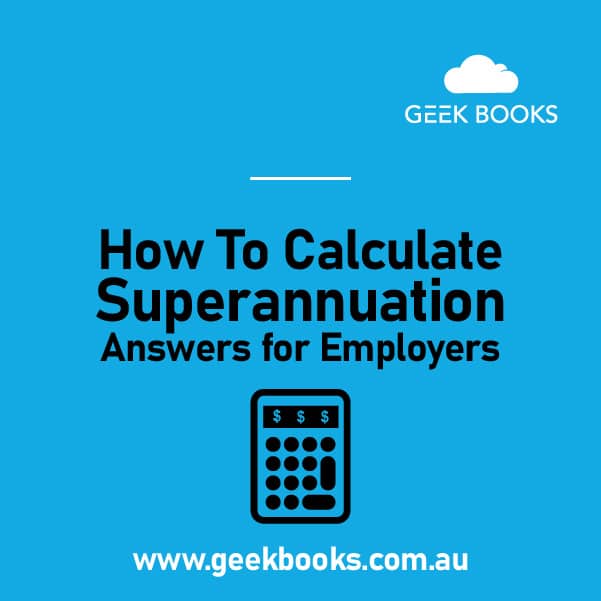Understanding how to calculate superannuation for your employees can feel like untangling a tricky knot! But it’s crucial to untangle. Why?
Correctly calculating and paying superannuation is your legal obligation as an employer.
It also impacts your employee’s future financial security and positively affects your company’s reputation for being diligent and ethical.
So let’s go over the Superannuation Guarantee (SG) rate, identify eligible employees, and perform the calculations.
We’ll also shed light on super payment deadlines and compliance with Australian Taxation Office (ATO) regulations.
This step-by-step guide will help you easily loosen the knot of calculating and paying your employees’ superannuation.
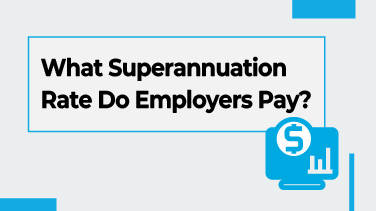
What Superannuation Rate Do Employers Pay?
The Superannuation Guarantee (SG) is the official term for the compulsory superannuation contributions Australian employers must pay on their employees’ behalf.
This setup helps employees build savings for their retirement.
As of July 1, 2023, the superannuation rate is 11% of an employee’s ordinary time earnings (not including overtime).
You must pay this contribution into the appropriate super fund for each eligible employee at least every quarter.
The superannuation rate is set to increase over the coming years.
| Period | Superannuation Rate |
|---|---|
| 1 July 2023 – 30 June 2024 | 11% |
| 1 July 2024 – 30 June 2025 | 11.5% |
| 1 July 2025 – 30 June 2026 | 12% |
| 1 July 2026 and onwards | 12% |
For more information detailing the superannuation rate in Australia, visit the Australian Taxation Office website.

How Do I Calculate What I Owe?
Now you know the superannuation rate or SG; you need to know exactly how to calculate superannuation owed to your employees.
Calculating these obligations as an employer can seem daunting, but using the official ATO Super Guarantee Contributions Calculator simplifies the process.
This tool takes into account relevant variables and provides you with an accurate amount that you owe to each of your employees.
If you’d prefer to do the calculations manually, here’s the basic formula:
Superannuation payment = Employee’s ordinary time earnings (OTE) x SG rate (currently 11%).
Let’s break this down with two examples.
Example 1: An employee’s OTE is $5,000 per quarter.
$5,000 (OTE) x 0.11 (SG rate) = $550.
So, you would pay $550 into the super fund for this employee for the quarter.
Example 2: Another employee’s OTE is $10,000 per quarter.
$10,000 (OTE) x 0.11 (SG rate) = $1,100.
In this case, the superannuation contribution would be $1,100 for the quarter.
Remember, you must perform these calculations each quarter for each employee to meet your legal obligations.
And as the SG rate is subject to change, always check the current rate when calculating.
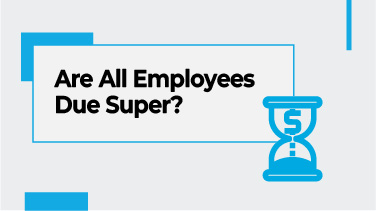
Are All Employees Due Super?
Not all employees are due superannuation contributions.
Employees are generally eligible for super if they are
- A part-time, full-time, casual employee or a temporary resident working in Australia who is 18 years old or over.
- Under 18 years old and work more than 30 hours per week.
Independent contractors paid wholly or principally for their labour are also eligible for superannuation.
Determining who is an employee or a contractor for superannuation purposes can be complex, so the ATO provides an Employee/Contractor Decision Tool to help.
However, this tool is currently being updated, so seeking professional advice is your best option.
A bookkeeper or accountant with expertise in Australian superannuation law can provide accurate guidance to ensure you fulfil all your obligations.
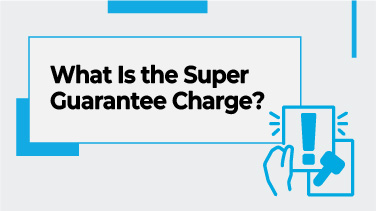
What Is the Super Guarantee Charge?
The Super Guarantee Charge (SGC) is a penalty for failing to pay the correct superannuation amount for your employees by the stipulated quarterly due date or to the correct super fund.
Unlike regular super payments, the SGC is not tax-deductible.
The SGC is not just a late fee; it includes
- The superannuation shortfall amount of the SG, which is calculated on salary and wages (overtime included) and any “choice liability” determined by the shortfall and limited to a maximum of $500.
- An interest charge of 10% accruing from the beginning of the relevant quarter.
- An administration fee of $20 per employee per quarter.
Avoiding this charge is relatively straightforward- pay your employees the right amount of super on time!
Here’s how:
- Calculate correctly: Accurately calculate the superannuation contributions for your employees. The ATO Super Guarantee Contributions Calculator can be of great help here.
- Pay on time: Meet the quarterly payment deadlines- 28 days after the end of each quarter.
- Pay the right fund: Pay the super into your employees’ nominated compliant super funds or retirement savings accounts.
- Keep records: Maintain thorough records of super payments.
Consider using professional compliance services if managing super payments feels too overwhelming or time-consuming.
Experienced bookkeepers or accountants can handle your superannuation responsibilities, ensuring timely and accurate payments to avoid non-compliance and related penalties.
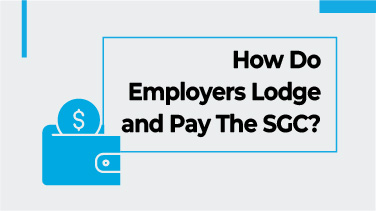
How Do Employers Lodge and Pay The SGC?
If you’ve missed the deadline for superannuation contributions or have underpaid your employees, you must lodge an SGC Statement to the ATO and pay the SGC.
- Calculate the SGC: Calculate the SGC you owe using the ATO’s SGC statement calculator tool.
- Prepare the SGC Statement: Complete the ATO’s SGC statement form.
- Lodge the SGC Statement: You can lodge the statement electronically using the Business Portal, Online Services for registered tax and BAS agents, or by mail. Electronic lodgment is recommended as it’s faster and more secure.
- Pay the SGC: Once you’ve lodged your statement, you must pay the calculated SGC to the ATO, and they will then distribute the superannuation funds owed to your employees. You can pay electronically via BPAY, credit card, direct credit, or direct debit. If you cannot pay the full amount upfront, you may be able to arrange a payment plan with the ATO.
The sooner you lodge and pay the SGC, the less the interest component will be, and you’ll avoid additional penalties.

<h2> Do You Need Help Calculating Superannuation? </h2>
As an employer, you need to know how to calculate superannuation in Australia to comply with your legal obligations.
Correctly calculating these contributions for your employees is like solving a jigsaw puzzle.
With the right pieces, you can form the full picture: a financially secure retirement for you and your team.
But what if you don’t have the time to assemble all the puzzle pieces?
You need an experienced superannuation expert on your side.
Talk to the team at GeekBooks today for expert advice on Superannuation Accounting and Financial Services.
We’ll take the stress out of the superannuation process by helping you calculate and pay your employees super on time.
Complete our online booking form or call 02 9158 3591 for a free bookkeeping quote.


